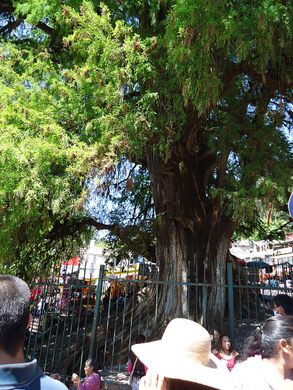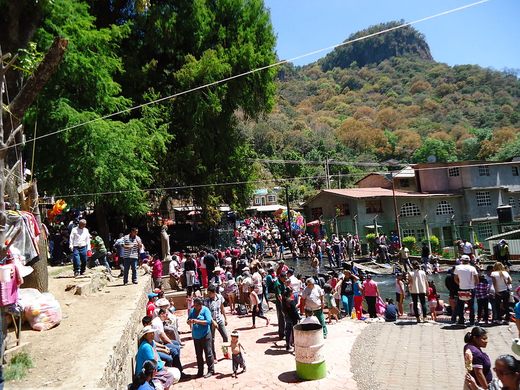AO Edited
Ahuehuete de Chalma
This specimen of Mexico's national tree is now central to religious pilgrimage and rituals.
The ahuehuete (Taxodium mucronatum), is officially Mexico’s national tree and several specimens throughout the country have become notable attractions due to their beautiful surroundings or impressive size and age, as many have witnessed important historical events. The specimen in the town of Chalma is noted not only for its age—estimated to be around 230 years—but also for its religious significance.
Chalma is best known for the veneration of the Lord of Chalma, an effigy of a crucified Jesus made out of black wood. The town has been the site of religious activities since before Christianity was brought by the Spanish colony, as the caves near the modern-day Sanctuary of the Lord of Chalma, are known to have been central to celebrations in honor of the Mexica god of war Tezcatlipoca, specifically in his avatar of Oxtoteotl.
The ahuehuete is located near the sanctuary and as such, it has been incorporated into the religious peregrinations and rituals in honor of the Lord of Chalma. Around the tree’s trunk, it is common to find hundreds of Christian figures and images. A river known as both La Escondida and Chalma River runs flows near the tree as well, and its waters are now ascribed medicinal properties.
Modern pilgrimage incorporating the ahuehuete will see pilgrims dancing around the ahuehuete for a set number of circles or amount of time, then bathing themselves in the waters of the river while wearing flower crowns, before continuing on to the Sanctuary where they will place the crown as an offering.

















Follow us on Twitter to get the latest on the world's hidden wonders.
Like us on Facebook to get the latest on the world's hidden wonders.
Follow us on Twitter Like us on Facebook